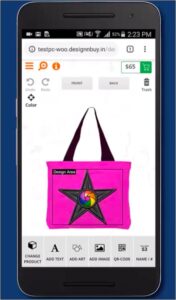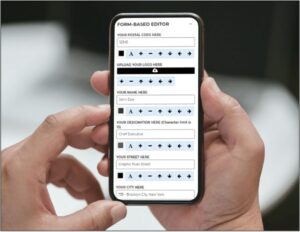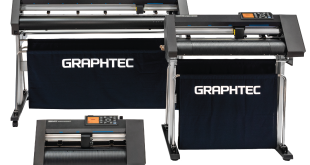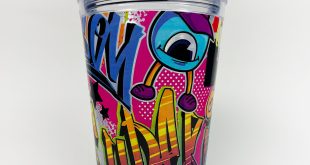In this informative article, Abhishek Agarwal, CMO of Design’N’Buy, outlines the top 10 elements you should be including on your website to improve your customers’ experience.
We are four months away from 2022, and boy, what a year it has been! Although the world is still reeling from the pandemic, the massive vaccination drives across the globe have made us all sigh with relief. Businesses everywhere are picking up pace if they have not already.
People are out again — fully masked — traveling, going to work, shopping, just how they used to pre-COVID-19. Printers also experience significant changes in their business.
While some areas of printing, such as office-related items, saw a dip early last year, the demand for custom print products such as T shirts and mugs rose considerably.
If you are an online printer who wants to grow exponentially in the coming months, you have to fix your store. You must incorporate some aspects of e-commerce web design that instantly catch the eye of the ever-demanding customers.
Here are the top 10 things that they expect from an online printer:
 1. Attractive product display on the homepage
1. Attractive product display on the homepage
Any homepage aims to engage the visitors as soon as they land on the website. That is why you must ensure your top-selling custom print items are adequately displayed under ‘bestsellers’, ‘featured items’, and ‘new arrivals’.
These sections should be represented through rotating banners and mini-menus to make it easier for the customers to explore your offerings conveniently. Include Calls-To-Action or CTA buttons for them to take action, such as ‘Buy Now’, ‘View Collection’, and ‘Avail Free Shipping’.
2. Clear and accurate price display
There are no surprises here, but research has found that 56.82% of online shoppers hate seeing the final order pricing inflated due to hidden delivery charges.
Using a suitable online web-to-print designer, you can deploy live quotations for all your products, enabling your customers to directly calculate how much the overall order will cost them based on the quantity, material/ fabric used, type of printing, delivery time, location, and so on.
The point is, do not fool your customers. Instead, make it a point to state your product pricing and delivery information clearly.
3. Advanced search functionality
The more extensive your product catalogue, the more critical it is for your print storefront to have advanced search functionality that enables customers to search whatever they like. While finding an e-commerce site without a search bar is rare, it happens with even popular brands.
If you use a tech-forward web-to-print solution, you can deploy a search functionality on the website and the design studio, which allows customers to search for images, vector art, and font type of their choice without having to scroll through the entire collection.
Many online stores also adopt autocomplete tools to improve the usability and relevance of search results and minimise ‘zero results found’ instances.
 4. Use of security badges for credibility
4. Use of security badges for credibility
If you use such logos on your website, it will boost your trustworthiness as an online printer. A survey found that 76% of customers do not purchase from an e-commerce storefront without recognising the security badges.
Therefore, to avoid such a problem, use Verisign, PayPal, BBB, and TRUSTe logos, which are easily recognisable. Besides, you should also avoid scaring off your customers with an expired SSL certificate. This is especially important to attract transactions on your storefront.
5. Faster production and shipping
No online customer wants to wait for days to receive their order. They want it quick. Even in custom online print solutions, ensuring fast delivery is possible. Traditional printing methods are incredibly time-consuming and tedious.
But a web-to-print solution can get the job done in a matter of minutes. The design process is simplified with print-ready, customisable templates that allow customers to make changes in their designs and speed up the order placement process.
When the prepress tasks are quick, the printing and shipping can also be accelerated, thus turning around jobs faster than usual.
6. Convenient live 3D preview of the order
This feature has become an increasingly popular option to have on e-commerce websites. A custom design may look great in 2D, but it might not look attractive enough in 3D. That is where the feature helps!
A software for an online print shop provides an enhanced personalisation experience by displaying a 360˚ view of the designs on print-on-demand storefronts. This enables customers to make an informed decision by looking at their design in a 3D format before spending money with you.
 7. Ready-to-use, customisable templates of different products
7. Ready-to-use, customisable templates of different products
Whether you sell personalised mugs and T shirts or marketing materials (flyers, brochures, signage) or apparel and footwear, providing print-ready templates to your customers to experiment with can easily save their time and effort.
Plus, they also do not need to invest in an in-house designer. If you can offer the same service to them on desktop and mobile through a design tool for printing businesses, they can edit the templates and place the order on the fly. This level of convenience will undoubtedly boost your sales.
8. Swift, responsive and dynamic storefront
Your web-to-print storefront should work on devices of all sizes, i.e., desktops, mobiles, tablets, and laptops. This is a must-have feature for your e-commerce store because it allows your customers to view and navigate the website without compromising the user experience.
Besides, you must also ensure your store works on all browsers — Chrome, Safari, Firefox, and so on. It should also be easily integrated with a good Content Management System (CMS), supporting any currency or language.
9. Multiple FAQs for support
There are many Frequently Asked Questions (FAQs) that could mushroom in your customers’ minds. Examples include:
- Where is my product?
- Can I cancel my order?
- When will my product arrive?
- Am I eligible for a refund?
A good practice is to ask your customer support team what common queries they receive from the customers. Convert those queries into FAQs and place them on the website. If the questions are category-specific, make sure there is an FAQ section on each product under that category. Otherwise, you can create a separate landing page for FAQs.
 10. Seamless design studio to personalise
10. Seamless design studio to personalise
Your web-to-print software solution should have a design studio that allows your customers to design and personalize products easily. The point is your customers want complete control of how they personalise, including creating the artwork from scratch or customising a template.
They want the freedom to select colours, materials, and visuals of their choice while personalising the printed product. If you could give that to them, they would be ecstatic.
Over to you
Most businesses order many printed products for their employees, clients, and vendors, starting from uniforms and buttons, marketing materials, trophies, and awards. On the other hand, individuals want to print custom mugs, feature walls, photo albums, and calendars.
Whether you are in B2B or B2C, there is immense potential for you to deliver an exceptional shopping experience to your customers, and you can do so with web-to-print.
 Printwear & Promotion The Total Promotional Package
Printwear & Promotion The Total Promotional Package




